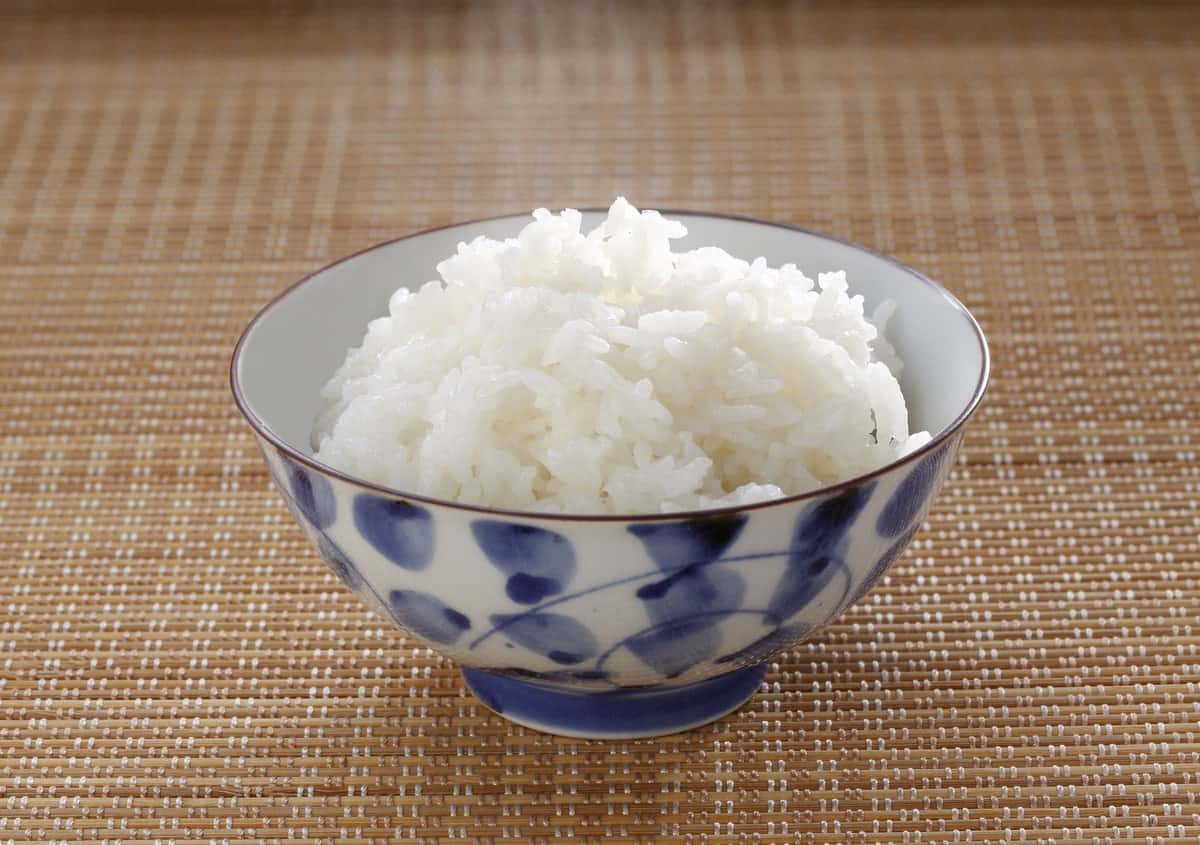How many calories are in a cup of rice?
A cup of rice has 205 calories.
How many carbs are in a cup of rice?
A cup of rice contains 45 grams of total carbs.
Additional rice nutrition facts
A cup of rice has:
- Calories: 205
- Fat: 0.4 g
- Cholesterol: 0 mg
- Sodium: 2 mg
- Potassium: 55 mg
- Carbohydrates: 45 g
- Dietary Fiber: 0.6 g
- Sugars: 0.1 g
- Protein: 4.3 g
Ready to make a lasting change?
A healthier you, wherever you are.
Is rice healthy?
Noom has a classification system that groups foods according to their caloric density. This refers to a measure of how much energy (calories) can be found within a given weight or volume of a food.
Green foods have the lowest caloric density and/or the highest concentration of healthy nutrients. Think: veggies and whole grains.
Yellow foods have a mid-level caloric density and/or a medium amount of healthy nutrients. Think: lean meats and starches.
Red foods have the highest caloric density, are the most calorie-dense and/or have the least healthy nutrients. Think: red meats and desserts.
Red doesn’t mean “bad” and green doesn’t mean “good” (though it does mean “better”). We only recommend balancing things out in terms of portions and frequency.
Real results with a personalized weight loss program
Take the quiz!

What color is rice?
Within the Noom Weight program, rice is considered a yellow food.
We recommend that you get most of your calories from yellow foods (45%) and then green (30%) and red (25%).
What are examples of other foods?
Green foods include: whole grain bread, skim milk, cucumbers, spinach, apples, tomatoes, non-fat yogurt, broccoli, brown rice, bananas, bell peppers, strawberries, tofu, non-fat cheese, unsweetened almond milk, oatmeal, quinoa, whole grain tortilla
Yellow foods include: grilled chicken, turkey breast, tuna, salmon, lean ground beef, eggs, avocado, low-fat cheese, black beans, chickpeas
Red foods include: oils, seeds, nuts, nut butters, desserts, red meats





